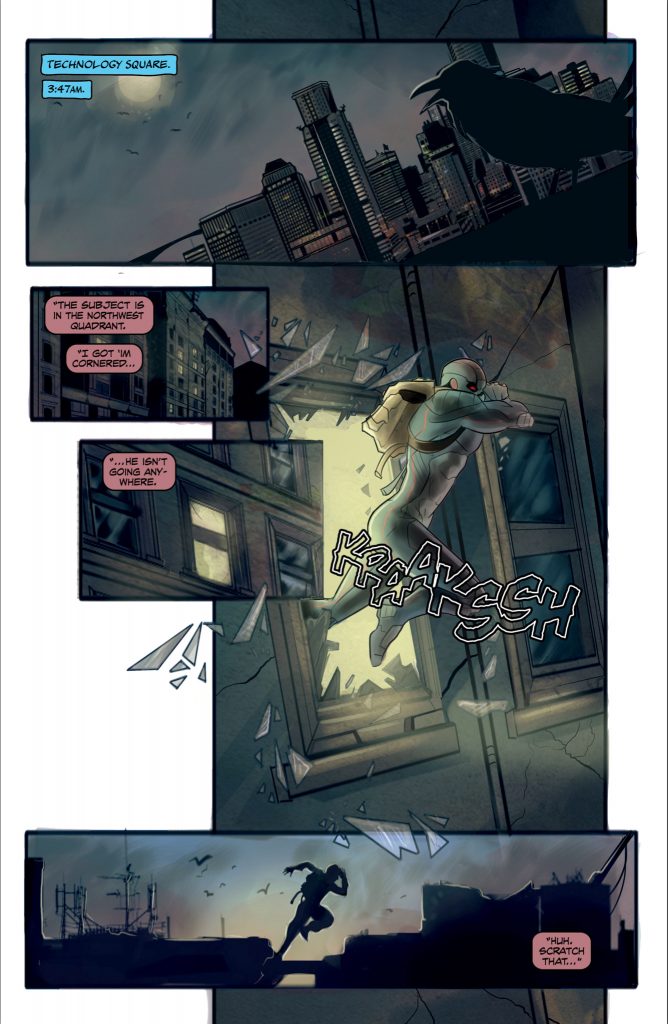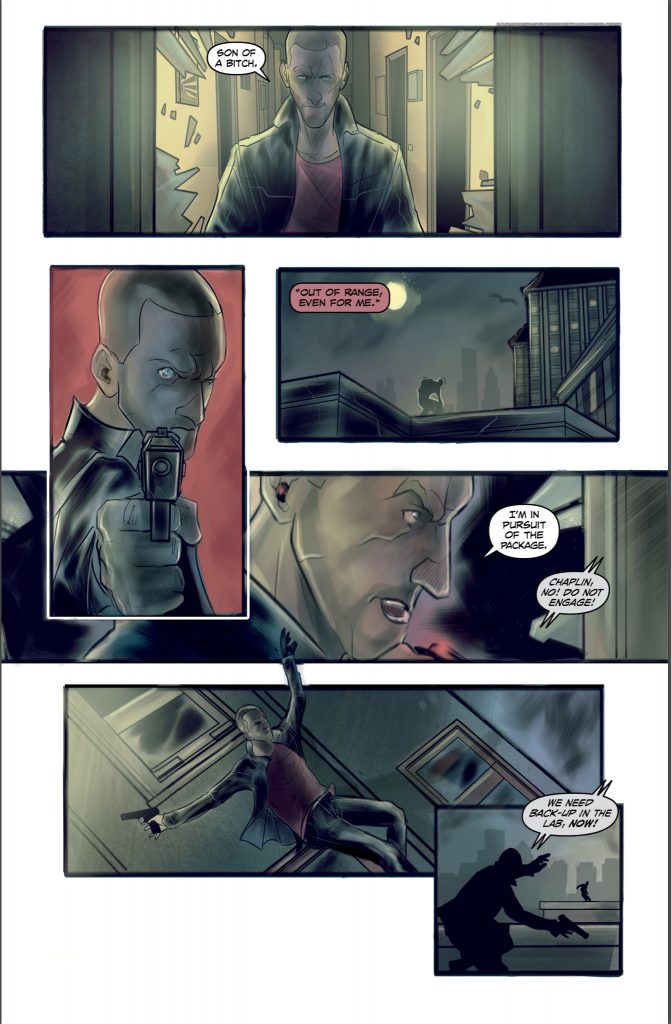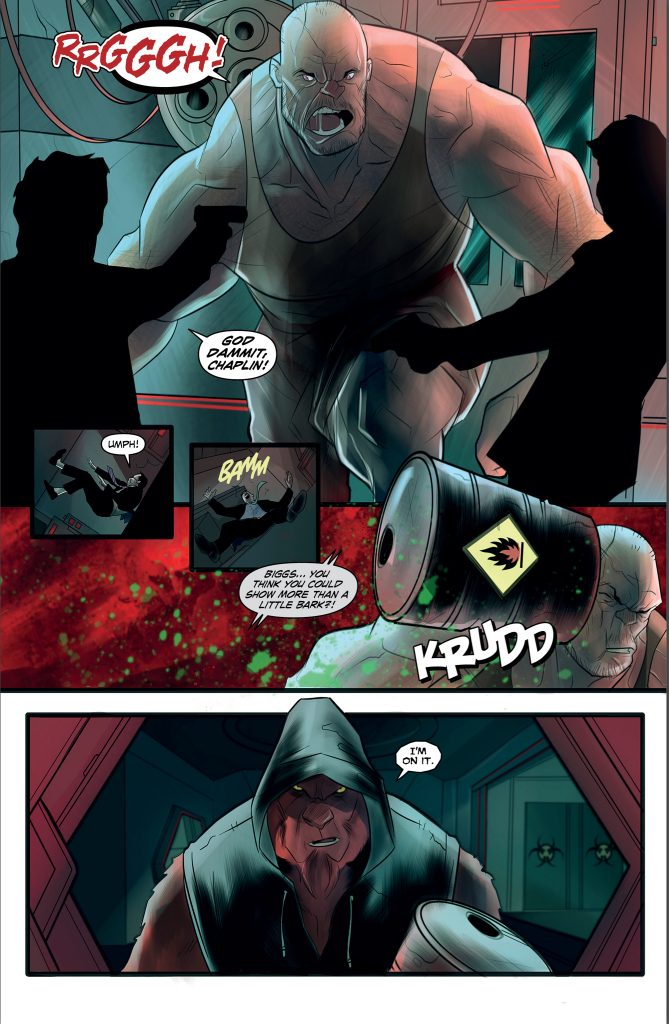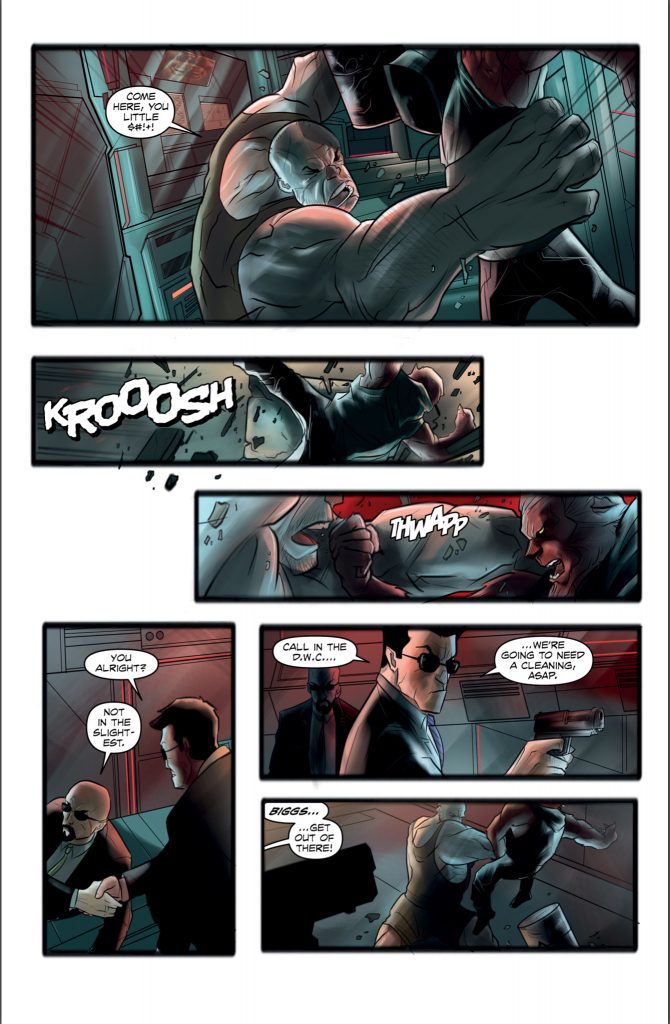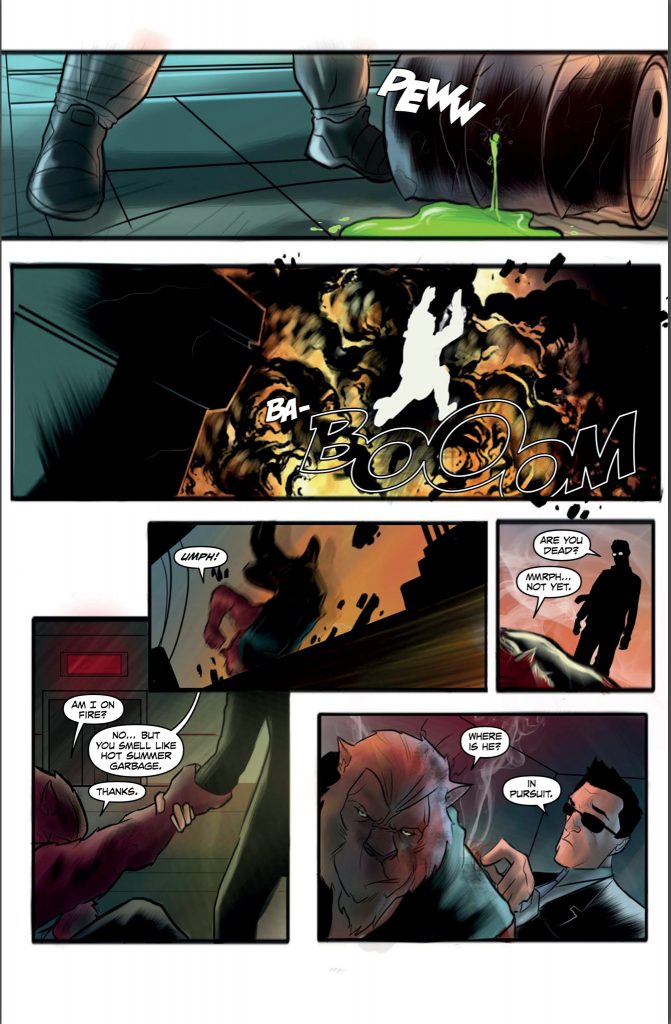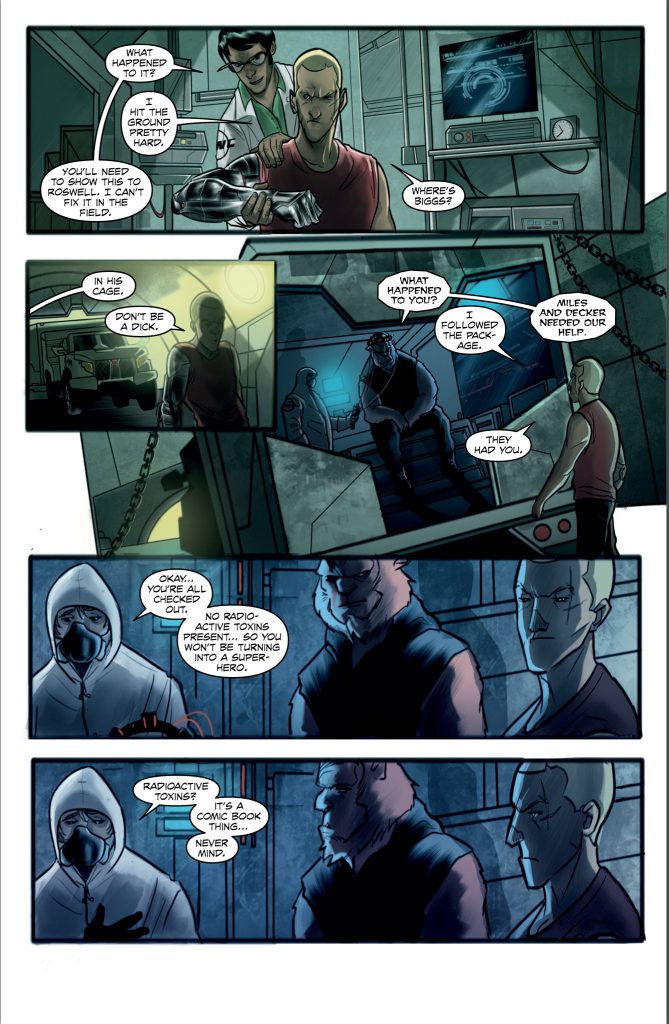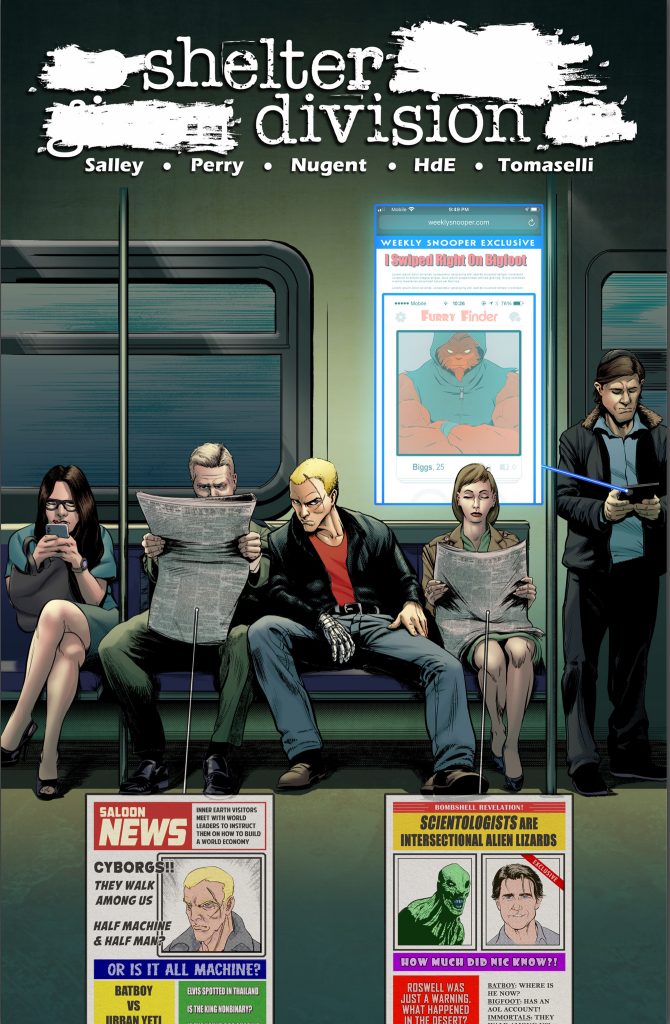
- Shelter Division (collected edition)
- Source Point Press
- Written by Bob Salley
- Art by
- Francesco Tomaselli (issues 1 & 2)
- Ken Perry (issues 2 & 3)
- Colors by
- Francesco Tomaselli (issues 1 & 2)
- Robert Nugent (issues 2 & 3)
- Letters by HDE
- Cover Art by Nick Dragotta (collected edition)
- Available in February, 2021 (currently listed on Amazon as available for Kindle pre-order)
For as long as there have been [REDACTED], there has been [REDACTED]. Okay, sure, the “elevator pitch” might be a little heavy on the details, but in the execution of Shelter Division, the creative team has made their spin on [REDACTED] its own special thing.
Shelter Division operatives Chaplin & Biggs are called in on a supposed robbery. Once they’re on the scene, they discover that they weren’t quite ready for the nature of these perps. One, an oversized mutation with ridiculously enhanced strength is able to keep Biggs busy, while the other proves fast enough to outrun Chaplin long enough to teleport away. These simple facts are made a little more impressive when you factor in that Chaplin is a cyborg with enhanced speed, strength, and targeting systems, & Biggs is a Sasquatch.
See? No mermen, cat-loving demonspawn or pyrokinetics unable to reign in their power. Okay, there is an alien, but that’s just Roswell and rather than holding any kind of status as an immigrant on a temporary visa, he serves as the team’s resident “Q” in charge of research & development, as well as maintenance on Chaplin’s hi-tech parts. Any other similarities between Shelter Division and [REDACTED] are only found in the shades of gray.
The story that Bob Salley (Broken Gargoyles, Ogres) is telling has more than enough meat on its bones to stand apart from what’s come before it. With a great eye toward the action in his script, Salley gives this one more of a Mission: Impossible attitude than anything else. The highlight of the story for me, always appreciative of sharp writing & dialogue, is in the interactions between the characters. Salley writes with wit, peppering the conversations among the people in his book with humor that doesn’t go over the top into total silliness. On top of that, Salley is self-aware enough to know that there will be comparisons made between his work and others. He addresses those concerns by tossing in a healthy dose of pop-culture references, diffusing concerns with a nod & a wink.
A book like Shelter Division has to be on top of the visuals in order to work. There’s just too much happening at any given time to settle for mediocre art, or even solid art of a style that doesn’t complement what’s happening on the page. Splitting the duties over the course of the three issues being collected for this edition, Francesco Tomaselli & Ken Perry actually made a great team. My first time through the book, the transition between artists was subtle enough that I wasn’t really aware of the change. Going back over it again, I made a point to note the hand off, but it was in no way as distracting as it could have been… It’s always dicey, changing artists in the middle of an arc, more so when it’s done in the middle of a single issue in the run. Tomaselli & Perry were able to blend their work, or had styles similar enough to begin with, to make the change go smoothly. Likewise, the handoff in coloring works just as well when Tomaselli steps back and Robert Nugent takes over. Overall, the abundance of action happening on the page added to the tone of the story as it ran from one panel to the next with some real quality violence.
So I do have to point out a couple things… While I liked the book and am looking forward to future instalments, some of the character designs were just a little too close to always be clear about who was doing or saying what on the page. This was made more apparent in a few panels where the viewpoint was pulled back for a wider shot, and details that might have been important to what was happening were lost. Also, a little more attention to detail in the editing process could have put a final coat of polish on this book. There are hiccups & stutter steps in the dialogue, nothing so heinous as to take me out of the story but glitchy enough to be noticed.
In the end, this is a great read and any issues I’ve mentioned are minor enough to be easily forgiven. Taken for what it is, a fast paced action story populated with interesting characters doing cool stuff, and I can’t do anything but give Shelter Division a solid recommendation. Improvements could be made, but not in the “make or break” category.
Final Score: 10/13
